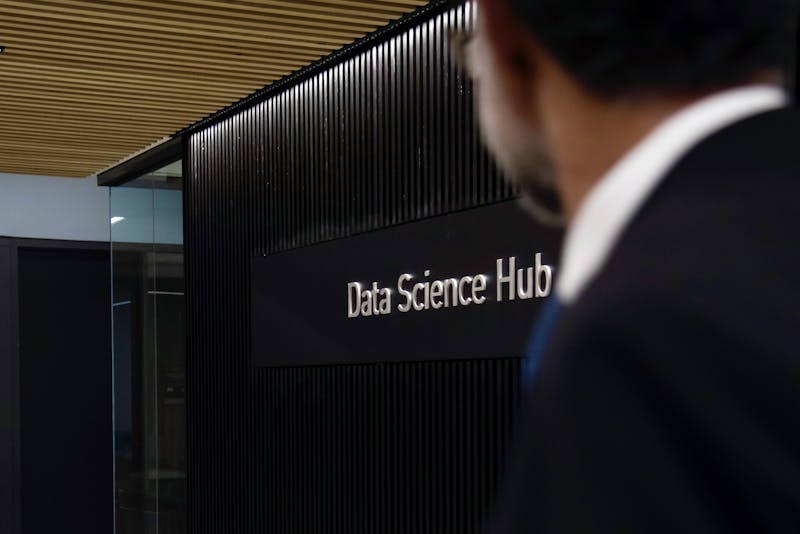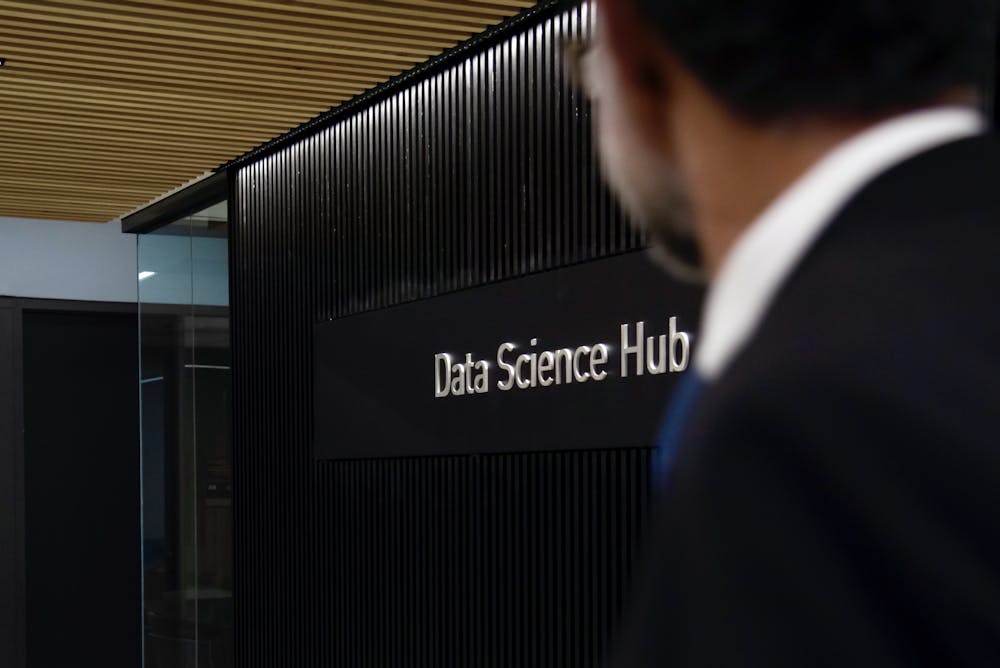Penn will now have access to a supercomputer in Collegeville called “Betty” to aid in AI research.
Credit: Chenyao Liu
Penn researchers are leveraging artificial intelligence to expand their capabilities with a new off-campus supercomputer named Betty.
The supercomputer — a powerful stack of graphics processing units and central processing units — was developed by the high-performance computing company NVIDIA and is located in a data center in Collegeville, approximately 30 miles from Penn’s campus. Betty was designed to handle AI programs that can interpret large datasets and produce increasingly refined results, adapting over time to meet specific instructions from researchers.
Penn Advanced Research Computing Center Associate Director of AI and Technology Kenneth Chaney described Betty as the product of collaboration between several of Penn’s schools, including the School of Engineering and Applied Science, the Perelman School of Medicine, and the School of Arts and Sciences in a statement to The Daily Pennsylvanian.
“The needs for modern AI research have grown to a scale … where it is no longer feasible to be maintained by any one school,” Chaney wrote, adding that representatives from Penn’s schools joined forces with the Office of the Vice Provost for Research “to create this resource and provide researchers the capability to explore new problems that need the computational power provided by Betty.”
Marylyn Ritchie, the vice dean of artificial intelligence and computing at the Perelman School of Medicine, explained the technology as an opportunity to grow with research needs and foster partnerships across disciplines.
“In the future, we will be leveraging AI in all areas of research,” Ritchie wrote in a statement to the DP. “While GPU computing may only be needed in some fields today, I think we will see it adopted in many/most fields in the future.”
Betty also demonstrates a shift toward shared high‑performance computing at Penn. Instead of each lab maintaining its own servers — which Ritchie described as costly and impractical — researchers can now access a centralized resource through PARCC.
“The standard model for computing is that a research lab buys the computers that they need for their research,” Ritchie wrote. “The reality is that most labs do not use their computers 24/7, so they sit idle much of the time.”
“The benefit of a computing center like Betty is that the campus community can share the computers so that they get optimal usage,” Ritchie continued. “This shared resource should better serve our researchers to enable computation at a scale that is difficult to do within one’s own lab.”
Both Chaney and Ritchie noted that hosting the supercomputer off campus was a practical decision. According to Ritchie, Betty requires “specialized energy and cooling systems,” which would have been difficult to supply on campus. Chaney wrote that “the current iteration requires 1MegaWatt of power,” which he described as “impossible to scale locally” in urban Philadelphia.
However, Ritchie emphasized that Betty “and all future computers in PARCC” will be fully accessible regardless of the system’s physical location off-campus.
“If you can access the network at Penn, you will be able to access Betty,” she added.
The supercomputer was named in honor of Frances “Betty” Holberton, a pioneer for women in computing and one of the six original programmers of the Electronic Numerical Integrator and Computer developed at Penn in the 1940s. The name is a nod to the University’s role in the history of computing innovation.
Sign up for our newsletter
Get our newsletter, DP Daybreak, delivered to your inbox every weekday morning.
The future of computing remains promising, according to Chaney, who wrote that Betty is currently in a pilot phase with “10 research labs and 47 researchers on the system in active use.”
Early partners include Computer and Information Science assistant professor Dinesh Jayaraman with “Project Eureka,” Bioengineering and CIS assistant professor Pranam Chatterjee developing “large models for biomolecular methods,” and Department Chair and Adani President’s Distinguished Professor of Computer and Information Science Zack Ives with “NSF AIRFoundry.”
Chaney noted that Betty’s early rollout is the beginning of a “a very bright future” for supercomputers involving new resources and collaborations “enabled by this system.”
The Daily Pennsylvanian is an independent, student-run newspaper. Please consider making a donation to support the coverage that shapes the University. Your generosity ensures a future of strong journalism at Penn.

